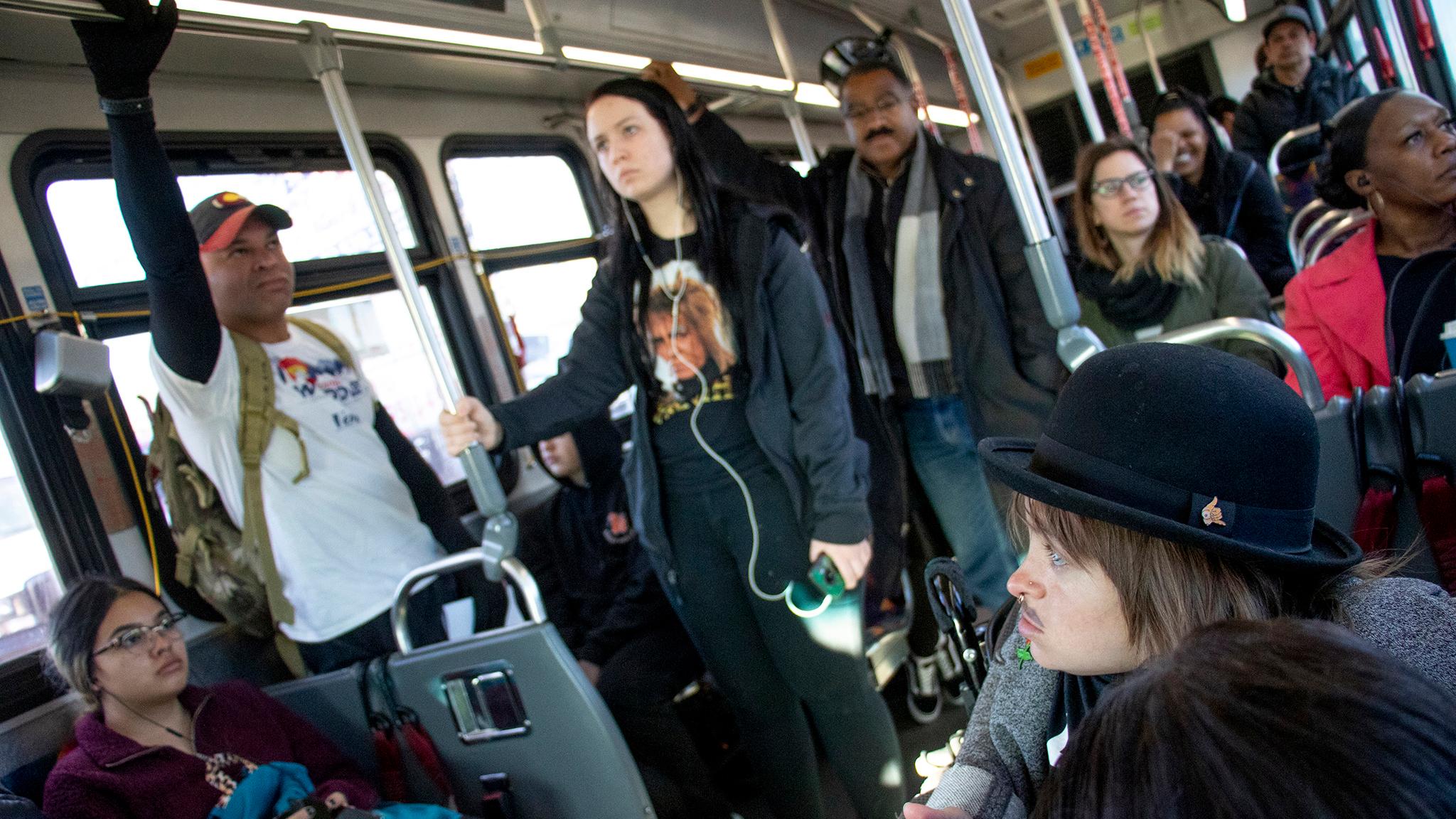The morning sun was low as the competitors gathered for their race. It was no ordinary trial. The three teams of municipal election candidates needed to work together to find the best route through Denver's transit system, from the city's less-connected corners to the Alliance Center downtown.
Transportation races are kind of a thing at Denverite. But where our race was about figuring out which of Denver's various modes might be fastest, Thursday's, put on by the Denver Streets Partnership, was about instilling a sense of transportation urgency in people interested in leading the city.
I shadowed District 9 candidate Jonathan Woodley and mayoral candidates Kalyn Rose Heffernan and Penfield Tate. What follows is a chronicle of our journey with lessons learned along the way. It seemed to me that we all had an opportunity to learn firsthand from Heffernan about the challenges of getting around while in a wheelchair, so the first few notes center around her experience.
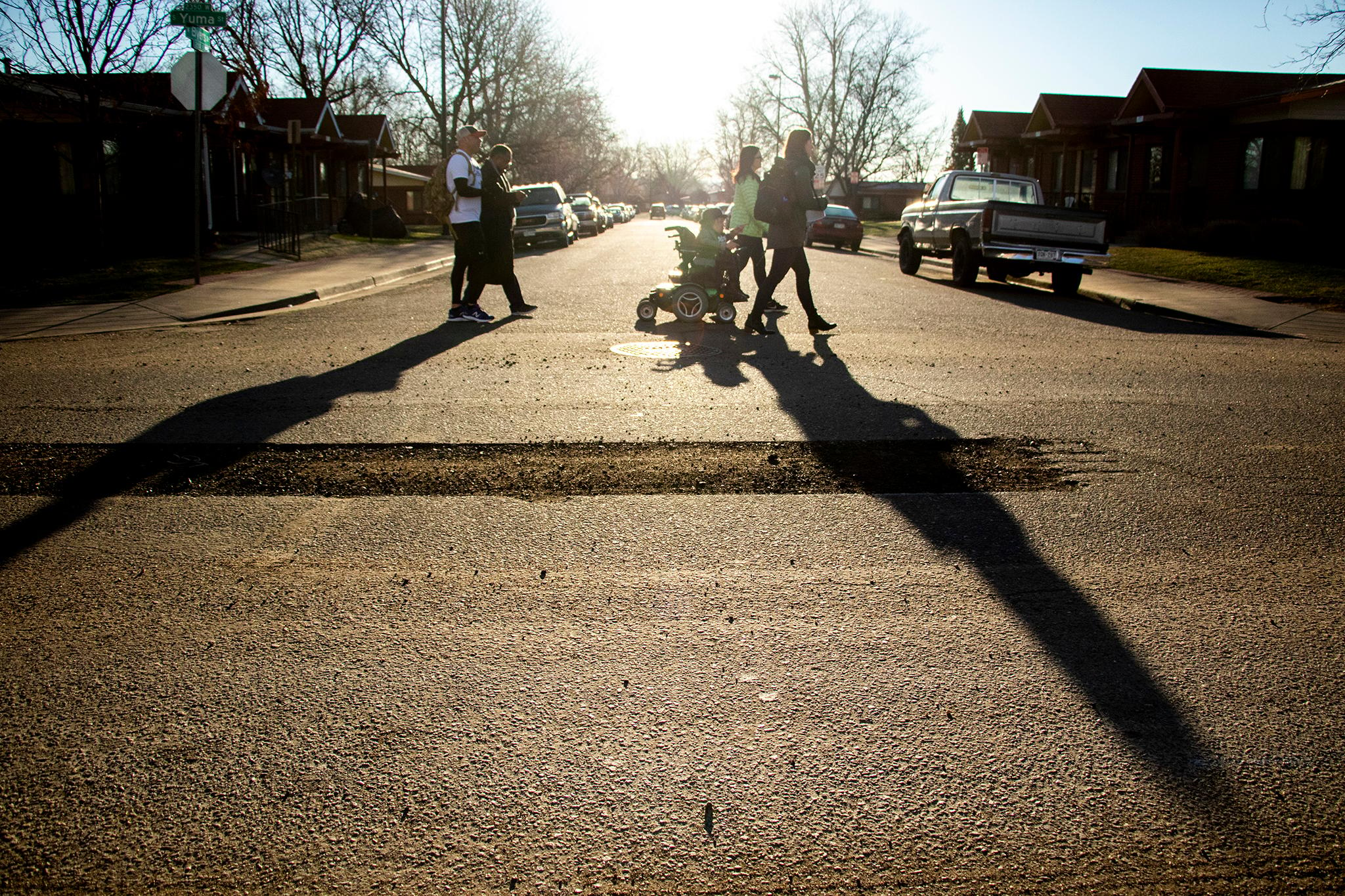
It was a few minutes after the designated start time and Heffernan had not arrived.
Woodley and Tate were getting ready to set off with their guide, Mo McCanna from Bicycle Colorado, when she appeared around the block.
Here was lesson 1: it's not so straightforward getting around on wheels. As Heffernan approached West Bar Val Wood Park in Valverde, she came across some ruined concrete that forced her to double back and go around, which delayed her arrival. This happens, she said.
Her trek to Valverde, in the first place, was lesson 2: for people in wheelchairs, the bus is one of few options. She took two to get to the starting line in her own, personal, amazing race.
While RTD offers "Access-a-Ride" and "Access-a-Cab" services, they're not the best for spontaneous travel. Jamie Lewis, an advocate with the Colorado Cross-Disability Coalition and a leader of another race group, told me after the race that both options have drawbacks.
If he wants a ride from an Access-a-Ride van, Lewis needs to arrange it the night before. Even when he has time to plan, that option can be onerous. Pickup times are more windows than set schedules, so riders need to be available long before they hope to leave. The service's user guide instructs passengers to set aside "several hours of travel time." So, not great if riders are in a pinch.
Access-a-Cab, an RTD service that coordinates with local cab companies, can also be unwieldy.
"If I have an emergency or I change my mind and I want to do something the day of my travel, I can call Access-a-Cab," Lewis said. "The trouble is, there's only 32 cabs in the metro fleet, so what are the odds that you're going to be waiting an hour?"
And here's one last consideration for Heffernan's trip to the starting line: ride sharing and dockless options are out.
"No Uber, no Lyft for me. No scooters for me," she said.
While Uber is working on wheelchair-accessible rides, they're not yet available in Colorado. The closest Lyft gets in Denver is a connection to Access-a-Ride or Via, a similar service.

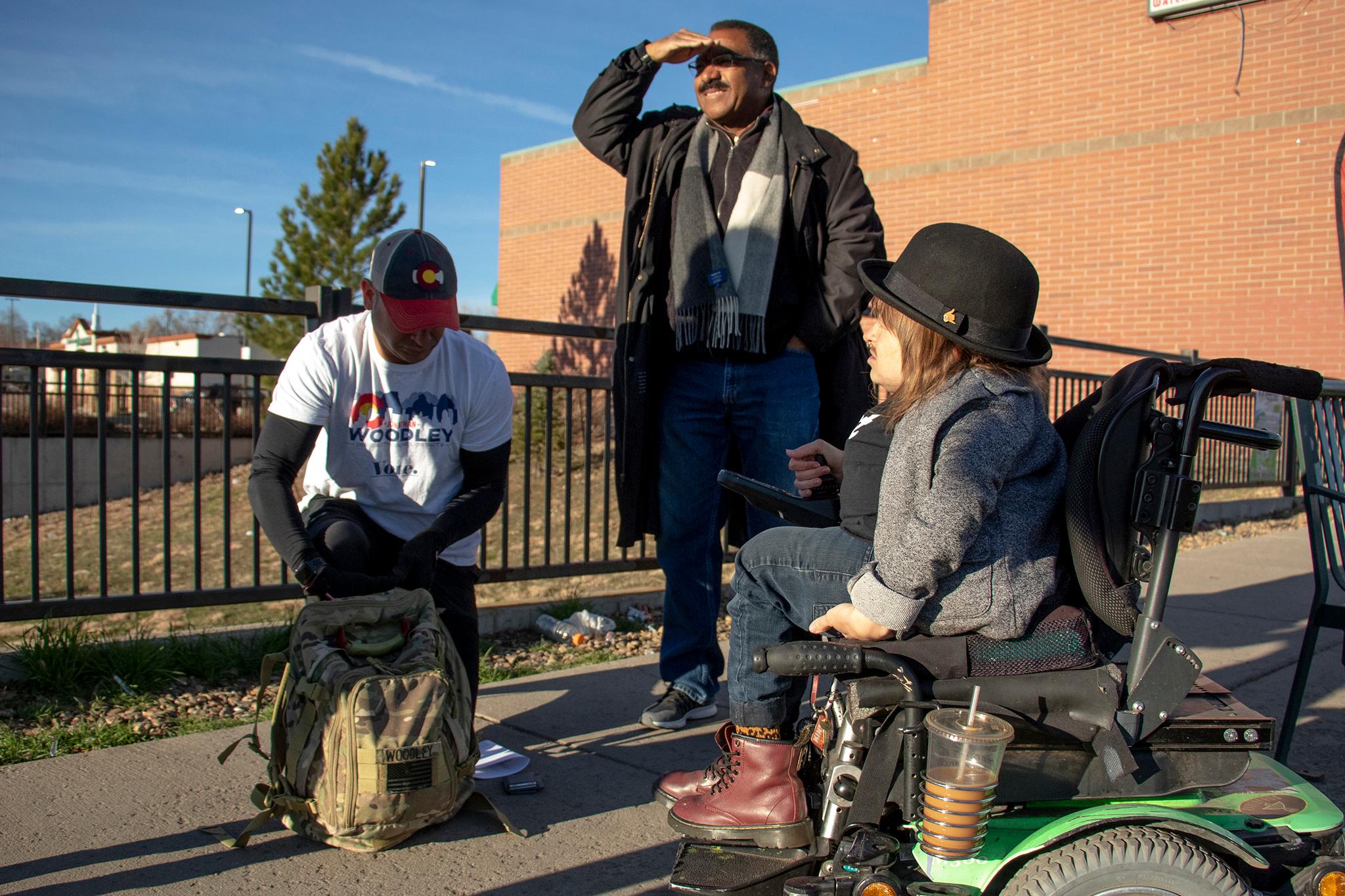
Finally, Heffernan, Tate and Woodley headed out of the park toward Alameda for the first leg of the race: an eastbound #3 bus.
The #3 brought us to RTD's Alameda rail station, where we took a northbound train to the Auraria campus. From there, we walked and rolled east to Broadway and Colfax, where the team was angling for some bonus points by taking a photo of the monument to the "Gang of 19," a precursor to the ADAPT disabilities rights group who demanded accessible transit by blockading city buses. This can be lesson 3, that substantial change in transit upgrades have roots in activism.
On the way, Heffernan pointed out another common, but awkward issue related to wheelchair access. When the group attempted to cross Colfax, she went to press the crosswalk button. But the button was on a pole past a curb. She couldn't roll over it, so she couldn't press the button. Here's lesson 4, pedestrian infrastructure is all about the details.
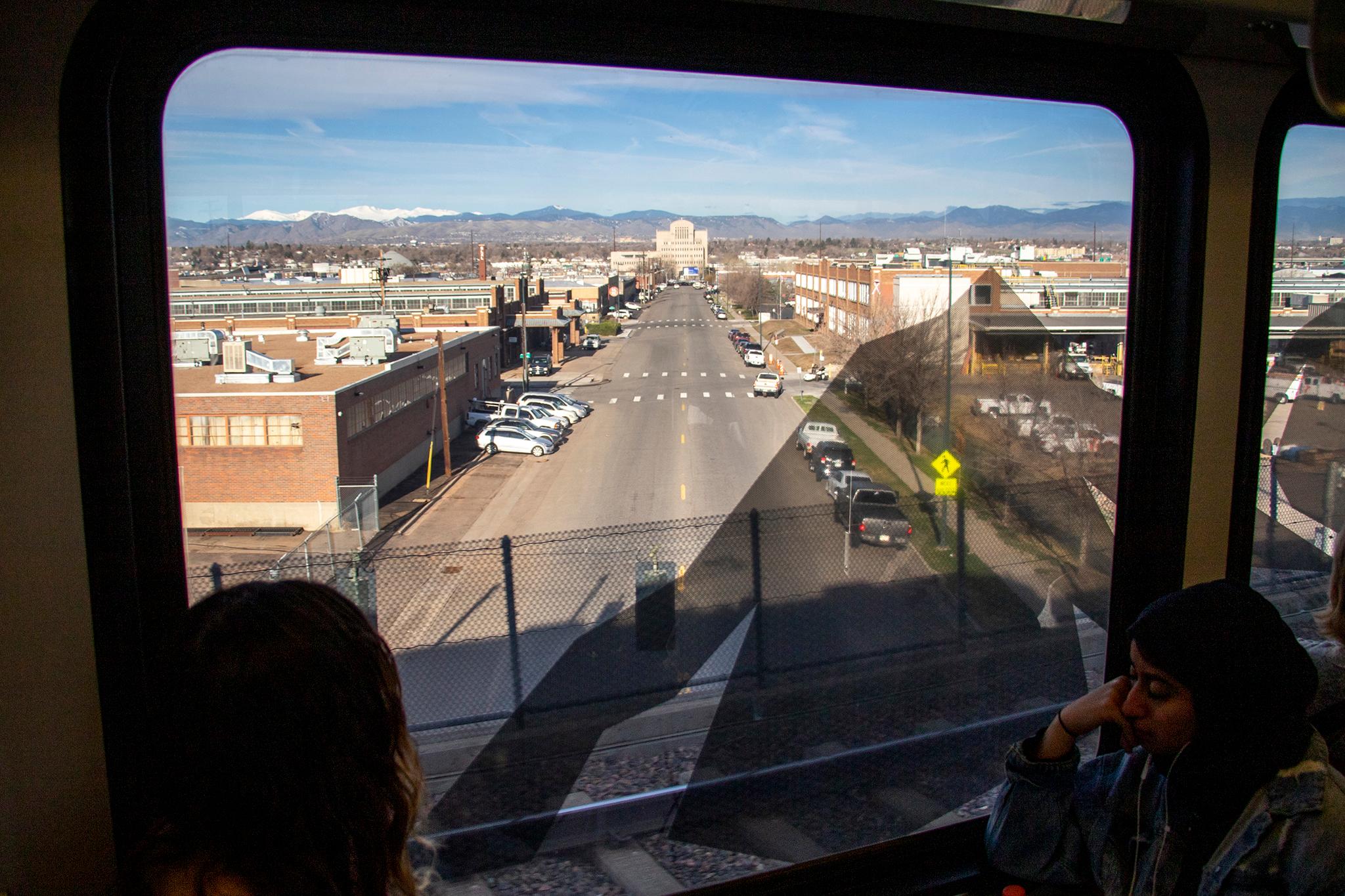

After collecting the bonus points, we crossed Colfax to catch a 16th Street Mallride to head to the finish line. It was, by far, the simplest leg of the race. Unlike the #3, for which we waited fifteen minutes, multiple mall shuttles were ready for us at Civic Center Station. Here comes lesson 5.
After the race, Danny Katz, director of the Colorado Public Interest Research Group, said the Mallride is one example of a transit system that's working really well for the city. It's regular, reliable and well used.
RTD has been in a tough spot as ridership drops and drivers are hard to find. If more people used various routes, bus systems might be able to expand. But Katz said that will take a cultural shift and investments to add density around bus stops and trains.
"The thing that's most important is that there's a high concentration of people," he said.
Piep van Heuven, chair of the Streets Partnership, said figuring out this formula is key to getting more people into transit.
"If everyone knows the bus is coming to their stop every 15 minutes, that's reliability," she said. Wait times in Denver are sometimes 30 minutes and "sometimes it's an hour. That's the difference between Seattle, with 40 percent single occupancy vehicle rate, and Denver, at 70 percent."
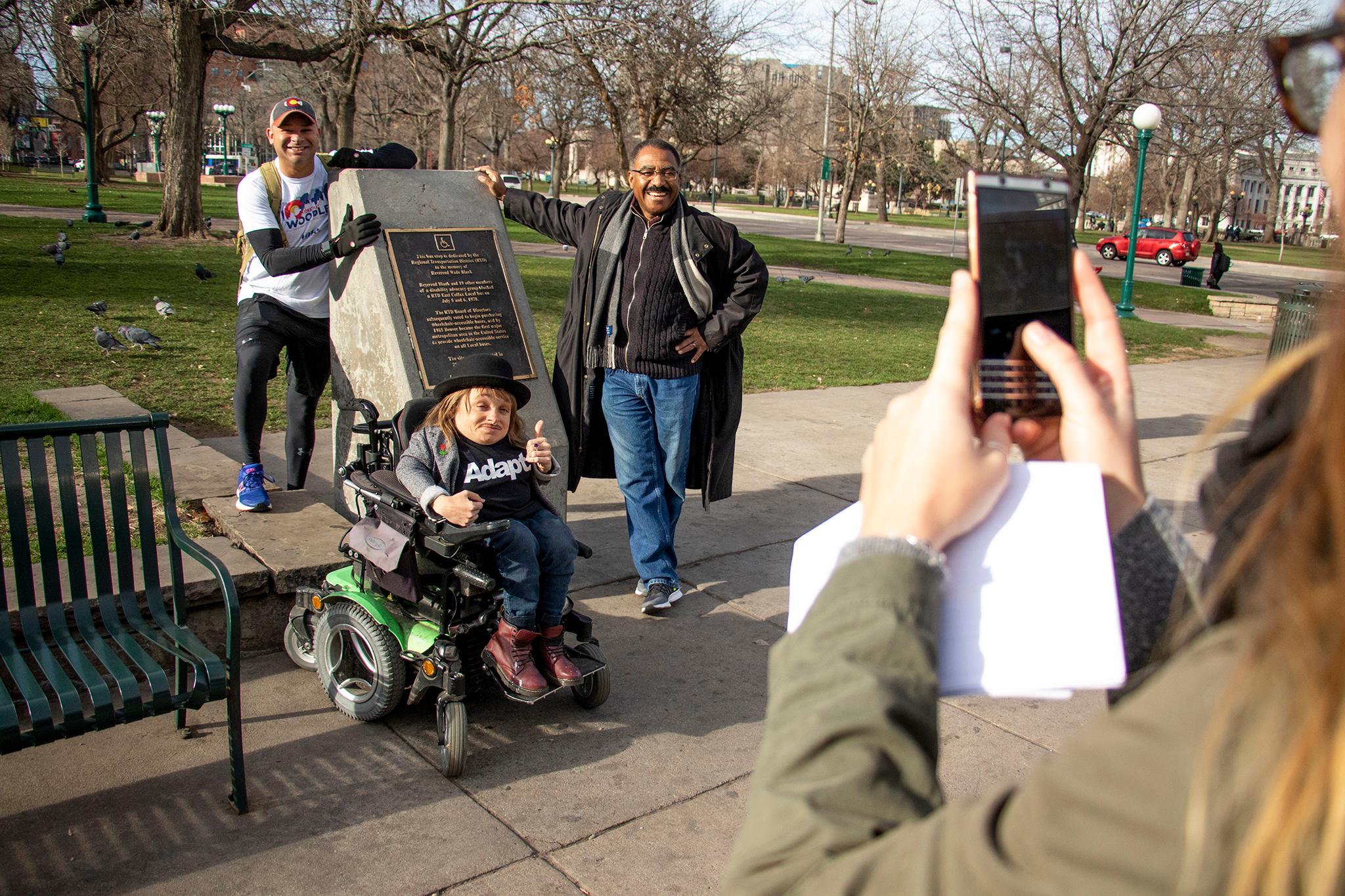
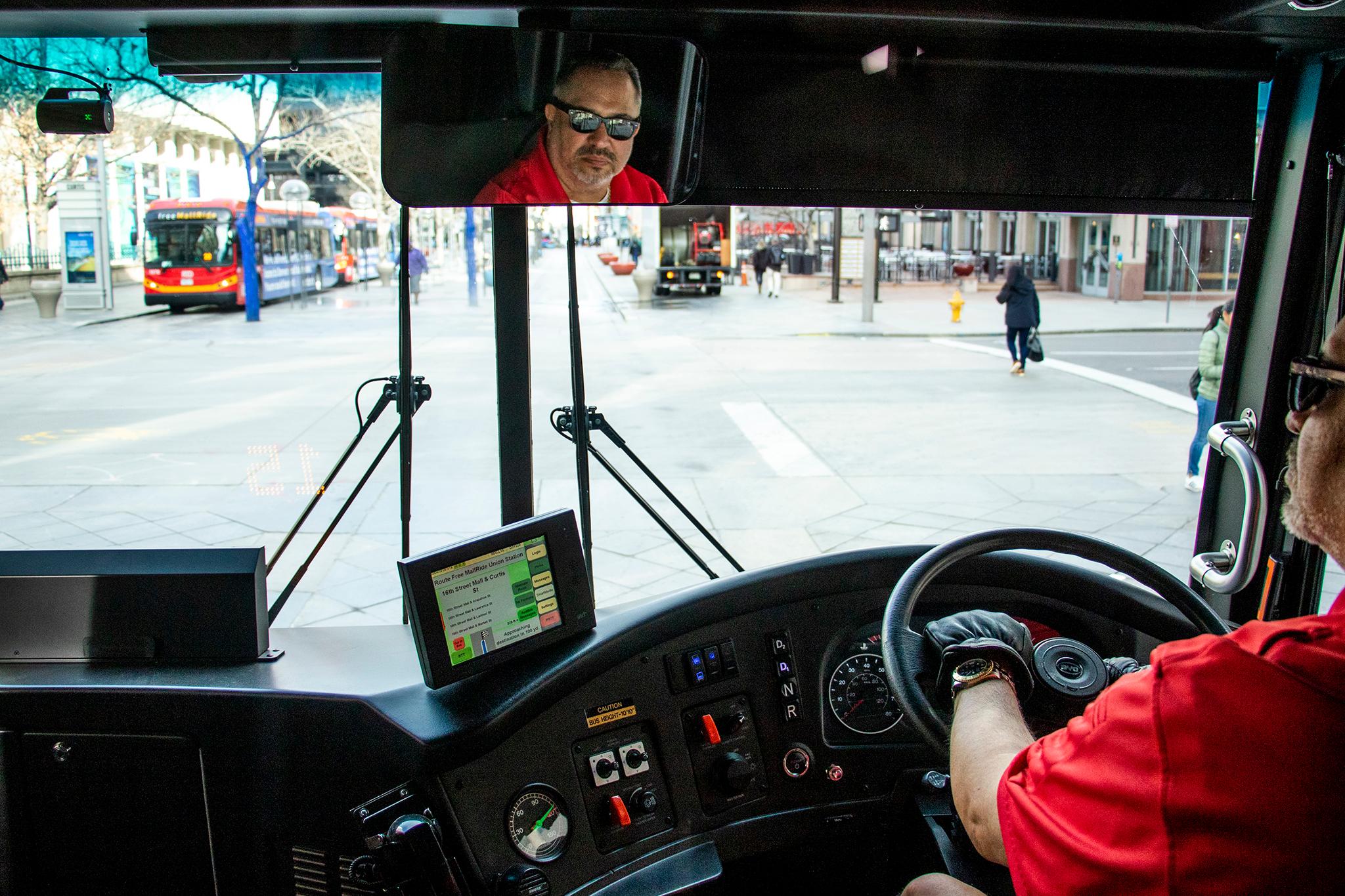
In his campaign, Tate said increased bus service is specifically one of his ideas to improve transit usefulness around town. He'd also like to see cheaper fares, though he knows "it's a fine line that RTD is faced with," cost-wise.
For Heffernan, the spaced service and long routes to go a relatively short distance is just her "everyday life."
After the easy jaunt from Broadway to Wynkoop, we made our way to the finish line. This group was last to finish, but ranked second, since Woodley, Tate and Heffernan grabbed that photo of the Gang of 19.
And then, van Heuven quieted the room to bring us our final lesson 6: lots of people think our transit systems need improvements, but this stuff is also pretty hard.
She asked the room of candidates what they might do for Denver's transportation system.
District 1 candidate Scott Durruh suggested making buses and trains free to kids 18 and younger. Kids under 16 can already use the system for free, but he said the city might encourage teens who can drive to think multimodally if they have free access while they can drive.
District 10 candidate Chris Hinds, who also uses a wheelchair, suggested the whole system could be free.
At-Large candidate Lynne Langdon said people like her, who only use the bus system sparingly, might be more inclined to ride if they could use their credit cards.

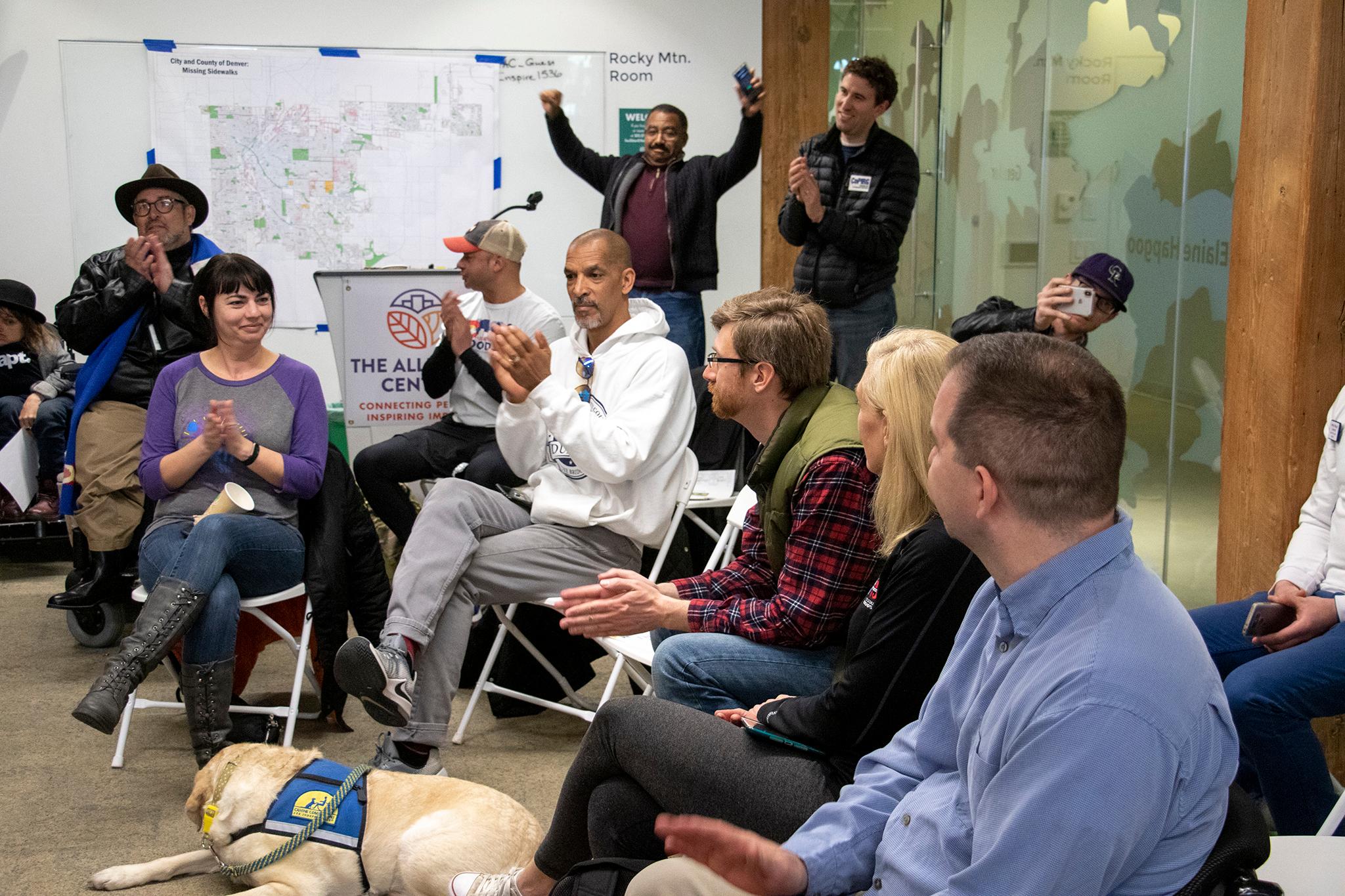
For Van Heuven and company, all new ideas are welcome.
"We need to figure out some better solutions," she said.
Even better, however, is a room full of people interested in civic action. She said she's "excited" so many showed up to think about transportation.
"Everyone had fun," she said. "We expect we'll be doing it again."

